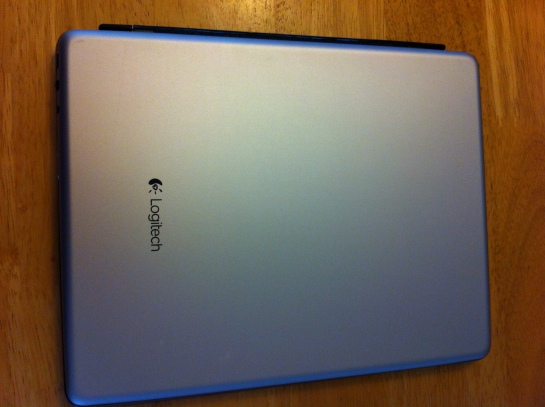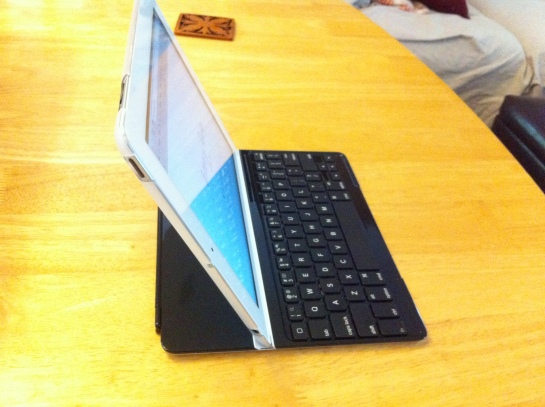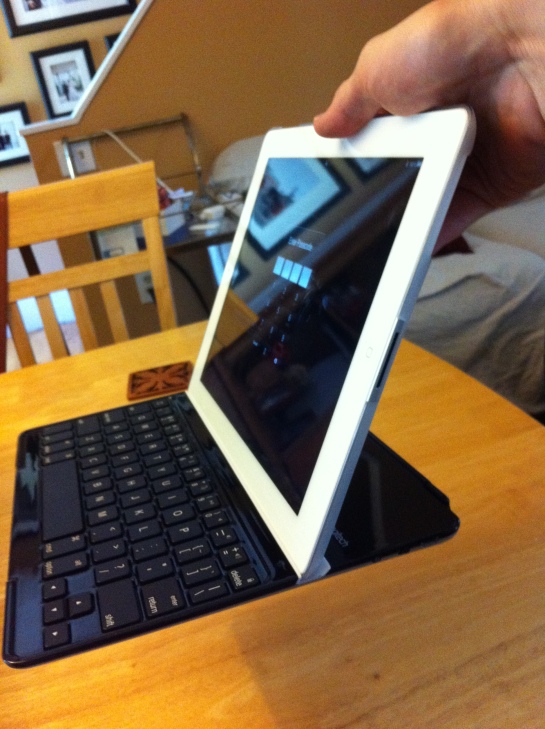The third year of medical school is a pivotal experience in the lives of training physicians. In some ways, it is one of the most difficult years in training, besides intern year. In this series, I will share lessons I learned as a third year medical student and my experiences teaching third years.
In the first installment of this series, I discussed the common pitfalls encountered by third year medical students. This time, I will discuss the qualities of students that make them shine and prompt their attendings and residents to say, “Wow, she is a great student.”
While many medical schools now have common parameters on student evaluation forms asking residents and attendings to grade knowledge, examination skills, critical thinking skills, cultural competency, systems awareness, and professionalism, the bulk of a student’s performance that distinguishes her from her peers centers on qualities that are not specifically queried in these evaluations. These are typically strengths of character that underscore every aspect of the student’s behavior. While this is by no means a comprehensive list, I describe some of these virtues here:
1. Consistency.
The training of physicians emulates the principles of future practice, and one of these principles is that physicians are required to perform to the highest achievable quality of care (and other roles, such as teaching and research) every day. Accordingly, students who maintain a steady and improving performance curve during the course of their clerkships are the ones who succeed. Much of the notion of reliability centers on a consistent manifestation of behaviors and attitudes. For example, the reliability of a consultant depends on his routine demonstration of politeness, enthusiasm, and thoughtfulness in evaluating cases and offering advice. The more the consultant strays from this path by angrily berating consulting physicians for an excess work load and by offering unhelpful suggestions, the more this consultant is viewed by his peers as unreliable.
Similarly, the best students are consistent in their behaviors and attitudes towards all people they work with: the patients and their families, nurses, therapists and technicians, residents, attendings, fellow students, etc. Students who only pander to their senior residents and attendings are flaky kiss-ups, while students who treat all with respect, kindness, and collegiality are viewed as solid.
2. Enthusiasm.
The practice of medicine can be tiring and grueling. Nonetheless, teaching is often a source of joy that cultivates energy for many physicians. Accordingly, students who demonstrate and foster enthusiasm for learning are more likely to be engaged by their residents and attendings in minute-by-minute teaching and guidance throughout the working day rather than just during scheduled teaching sessions. Similarly, students who are enthusiastic about patient care rekindle this desire within tired resident physicians, prompting those residents to perform better in order to serve as good role models and guides to the students and their patients.
The most enthusiastic students might also sometimes share enthusiasm in a meaningful, nonintrusive and noncompetitive way with their peers (fellow students), encouraging all towards improvement of knowledge and practice. A genuinely enthusiastic student can truly galvanize a team towards functioning as a better unit, engaging in more teaching, and delivering better care.
3. Passion
While enthusiasm is a must, passion for the professional field of the clerkship (e.g. the training chosen by the residents and attendings) is not required for students. For example, I do not expect students on the Neurology clerkship to all want to become Neurologists. While an expression of genuine interest is always a pleasant occurrence, this does not set up this student in my mind as a better performer or as one that I should treat more kindly or with more attention. Inevitably, I do end up interacting with students who do have interest in this field slightly more because of the desire to ask questions and seek advice about residency, but this does not reflect on performance.
However, passion for something is an important quality that all physicians should have but many do not display, at least not openly. Whether it is a passion for public health or improving education or delivering better patient care or restructuring health policies, the expression of passion by students almost always works in their favor. People want to work with others who care about something, because passion is an energizing force.
4. Integrity
Moral behavior is usually the principle tenet underlying the concept of integrity for physicians-in-training. In particular, honesty is an essential trait. While it is acceptable for patients (particularly with neurologic, psychiatric, or systemic symptoms) to confabulate, it is NEVER acceptable for a student to outright lie or even slightly bend the truth. I have utmost respect for the students who say “I don’t know,” “I didn’t ask that question,” or “I didn’t examine that” when asked about history or examination details by an intimidating attending physician or senior resident. By corollary, I immediately lose faith in the integrity of students who fudge the truth, and I can no longer trust anything he says or does. Integrity can seem to be a very difficult quality to cultivate, but in reality, only the strength of a student’s commitment can keep him honest.
5. Compassion
Most physicians engaged in patient care derive some satisfaction and expression of purpose from patient care, and in particular, the giving of compassion to those who are sick. Particularly in a system which constantly conspires to keep physicians and patients at a distance (separated by time, excess documentation, and threat of litigation), the demonstration of compassion by a young trainee shines like a beacon that inspires hope. In particular, since each aging generation predicts destruction for the next, it is encouraging to see a commitment to the primary virtue (compassion) that fuels the practice of medicine, even when the health care delivery system itself does not readily support this virtue and often works against it. Seeing compassion in a student reminds the rest of us why we came into Medicine in the first place. For some attendings and residents, having that reminder each year with new students helps us cultivate and maintain our own commitments to this virtue.
6. Confidence
While overconfidence and lack of confidence can both discolor student’s performance, displaying a healthy degree of confidence is a positive asset for students on their clerkships. In particular, when faced with a question to which he does not know the answer (a frequent occurence on the wards given the nature of “what am I thinking?” questions often asked by residents and attendings), a student should feel comfortable stating that he does not know the answer but still have the confidence to try and reason through: “I do not know for sure, but I think that this could be caused by (etc., etc.).”
Most people do not know from where confidence should arise: often the assumption is that confidence comes with knowing everything, but this is a losing game for students because inevitably someone (an attending or resident) will know more. Rather, confidence should arise from a student’s commitment to fundamental principles of Medicine and to performance as a physician according to those principles: “I am confident that although I do not yet have all the knowledge or skills I need to perform this task, I will continue to constantly improve and learn. I am confident that I will always provide care for patients with as much compassion and integrity as I would want for myself or my own family.”
7. Groundedness
Much of the third year of medical school on an intellectual level is based in theory and discussion: third years spend a large portion of their time in attending rounds, tutorials, and conferences. However, the faster students transition to the reality of delivering actual patient care, the better they will be suited for their imminent roles as interns and residents. Accordingly, students who delve more actively and deeply into the nitty-gritty of patient care tend to find rewards in the form of gratitude from patients as well as from residents (who appreciate the care given that they otherwise would have to deliver and the identification of issues that might not have yet been addressed or discovered). Residents and attendings want to see progression of students as they emerge from their coccoons of the preclinical years to becoming full-fledged clinicians who are capable and pragmatic.
8. Hardiness
While clerkship policies vary from one medical school to the next, there in theory are no work hour restrictions for medical students (while there are strict restrictions for residents). An amazing amount of respect and gratitude goes to students who jump into the trenches with their interns and residents to actively engage in patient care, work long hours, and see tasks through to their completion (rather than wait for the updates the next day, a task which requires more time from the residents in the morning when they are otherwise busy preparing for the work day). By corollary, there is a strong cultural stigma against asking the question “Is there anything I can help you with? (two seconds later) Can I leave?” The general wisdom among medical students that is handed down by residents and attendings is that the more one helps out with patient care and getting work done, the more likely one will be given opportunities to learn as the residents will have more time to teach. This, of course, is a probability game: the teaching will not always happen, and not all residents are interested in teaching and not all are effective teachers. Nonetheless, demonstrating hardiness and resilience is an admirable trait: just like in battle, there are people you want to have by your side, and being one of those people gives one considerable value and respect in the eyes of others.
9. Camaraderie
Finally, at this time, medical care is rarily delivered solo, and within the hospital setting it is always delivered by teams. Accordingly, it is essential for physicians-in-training to cultivate camaraderie among their fellow trainees, with residents and attendings, and with other staff members who help to deliver care to the patients. Recruiting patients and their families into this “team” is also one of the most effective strategies for delivering long-lasting positive effects on individual health outcomes. The students who do this best support their fellow classmates (by sharing their learning and serving as leaders among the students), support their residents (by helping them out with patient care tasks, including performing initial evaluations, scut work without calling it or thinking of it as scut), support other staff (by treating nurses and others with respect and as equal partners in this enterprise), and supporting their patients (by becoming the primary liaison with patients and their families, fielding questions and offering capable answers when appropriate and seeking assistance when needed). Team players are valued in medicine, while most self-imagined virtuosos (or prima donnas) are almost all failures due to paralyzing personality traits (e.g. succumbing to the pitfalls mentioned in the previous post and not embodying the virtues described here). As such, anything one does to foster camaraderie on the wards will earn respect and admiration.
Fellow residents and attendings, what qualities do you value in students? What characteristics or behaviors help distinguish students as the strongest performers and the most likely to become excellent physicians? Please send in your comments and thoughts.





